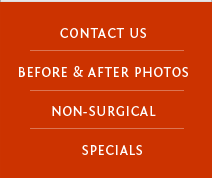The majority of Asian individuals have no definite skin crease on their eyes at the point where the upper eyelid skin attaches to the underlying lid-raising muscle. Because of this, the eyelid skin is pushed down toward the lash-line when the eyes are open. Individuals with absent eyelid creases often have excess fat protruding around the globe as well as an excess under the muscle layer beneath the skin. The result is eyes that appear narrower and heavier than they actually are. Aesthetically pleasing Asian upper eyelids have a relatively low-set skin crease with a narrower show of the skin above the lash-line.
Questions
How is an Asian Eyelid Procedure Performed?
An Asian Eyelid operation, also known as blepharoplasty, is generally an outpatient procedure using local anesthesia. During the procedure, an incision is made along the upper eyelid through which excess fat and skin are removed. How much skin is removed often depends on the age of the patient. Some of the fat will be retained in order to avoid a hollow appearance around the eyes.
Dr. Kim will also use the access provided by the incision to make connections between the skin and the lid-opening muscle to set the crease.
Who is a Good Candidate for Asian Eyelid Surgery?
Good general health is mandatory for any patient undergoing a cosmetic surgery procedure. The ideal candidate will have absent creases, puffy eyelids, narrow appearing eye-openings, asymmetrical creases, and/or extremely low creases. The candidate should have no other medical problems related to the eyes.
Recovering from Asian Eyelid Surgery
As with any operation, patients should expect some discomfort during the recovery period. Bruising and swelling around the eyes is normal, but should recede enough to be covered by makeup within a week to 10 days after surgery.
Complications of blepharoplasty are infrequent and mostly minor. The most common side effect is excessive bleeding, which causes more bruising than usual. Infection and visual impairment are extremely rare problems.
Asian Eyelid Surgery Results
It is important that this procedure be individualized since the presenting anatomy varies from person to person. A personalized and well-executed operation should result in natural appearing Asian eyelids with nicely set creases. The purpose of the procedure is to enhance the beauty of the Asian eyelids, not to westernize them. However, depending on the existing anatomy of the eye area, some individuals may require a more routine non-Asian upper blepharoplasty. Healing is a gradual process and continued changes in the area may continue for six months or more.
The goal of Asian eyelid surgery is to make the eyes appear more open and the eyelids lighter. The face looks brighter and the person looks more alert and awake.


